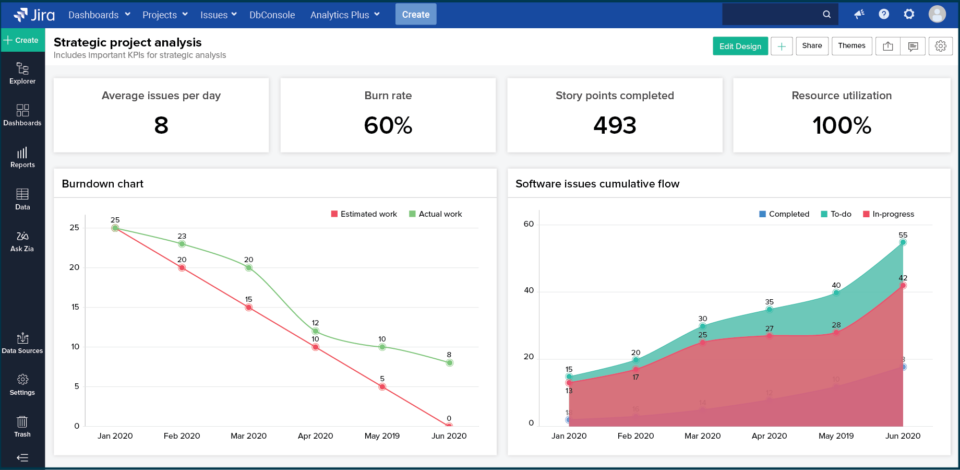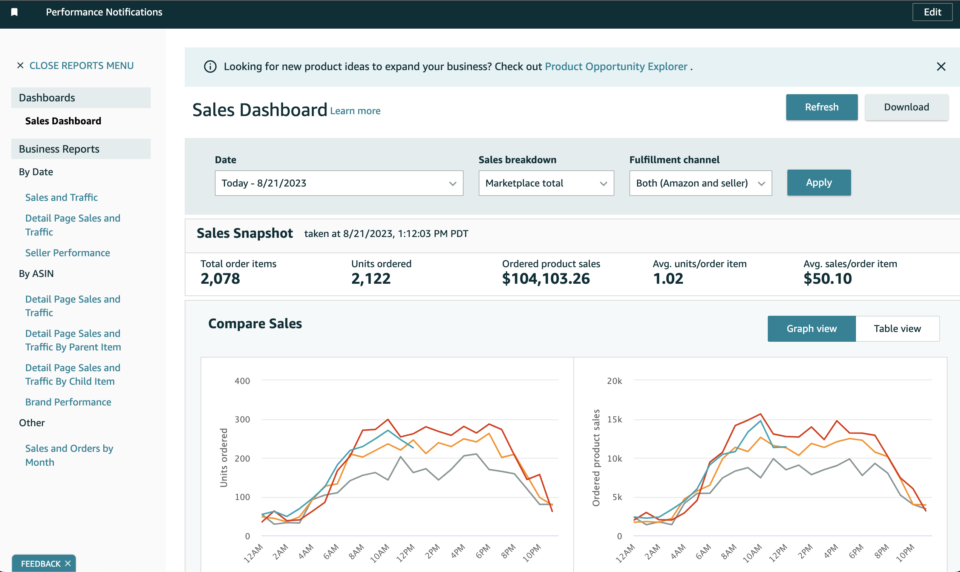Make Data Count!
In today’s data-driven world, every software company, from startups to established enterprises, is seeking to leverage data in meaningful ways. As a CTO, you understand the pivotal role that technology plays in shaping your company’s future. This blog post explores how embedded analytics can become a strategic asset, transforming scattered data into tangible returns for your software company. After reading this you will have a great idea of how to realise stronger returns on data with embedded analytics.
What is Embedded Analytics, Actually?
Embedded analytics is the gateway to empowering your software applications with data-driven intelligence. It goes beyond mere visualisation, embedding insights directly within your applications. These insights, in the form of metrics, charts, and dashboards, aren’t just for show – they are the building blocks of letting your users achieve greater results with your software.
Imagine, for example, an integrated project management software that not only tracks tasks but also provides predictive insights, optimising project timelines and resource allocation. This level of integration is the hallmark of embedded analytics, where data becomes actionable intelligence.

The Value of Embedded Analytics
Embedded analytics adds value on two fronts. Internally, your widely-used business applications can be supercharged with intelligence, drastically reducing the time to decision and increasing the business value. But don’t stop there – externally, embedded analytics can be a source of additional revenue. You can offer valuable insights to customers and partners who are willing to pay extra for these services.
For instance, take Amazon’s Seller Central, where sellers get advanced insights into the performance of their product sales, marketing campaigns and much more. A prime example of leveraging embedded analytics to generate additional value for customers and simultaneously additional income for Amazon. The duality of internal efficiency and external revenue streams makes embedded analytics an invaluable asset and the worthy next step in companies’ analytics journey.

Great, So How to Go About Embedding?
For a CTO, implementing embedded analytics starts with a foundation in internal analytics. You may begin by consolidating data sources into a central platform, for example Snowflake, accelerating your ability to answer common business questions. However, the true challenge arises when a plethora of dashboards yields minimal results and sees little to none business adoption.
To truly drive tangible results and revenue with embedded analytics, you must think outside the box. Consider how these insights can be seamlessly integrated into the applications your business colleagues already rely on. Then extend these benefits to partners and customers, offering data-driven services they’re willing to invest in.
How to Find the Best Software for Embedding?
Choosing the right software for embedding is a critical decision for a CTO.
Here’s how to approach it:
1. Define Your Requirements
Start by clearly articulating your requirements towards an embedded analytics solution. What visualisations do you need? Where will your data be hosted, in a data warehouse or in-memory of the analytics app? Do you require data modeling capabilities in the analytics software? Here is a really good blog post on common business requirements for analytics software.
2. Identify Potential Providers
Don’t limit yourself to industry giants. Explore niche providers optimised for embedding. Check out software comparison platforms like G2 or Capterra for good overviews.
3. Assess Integration Compatibility
Ensure the software aligns with your infrastructure and existing applications. Go to their public documentation and use text search functionality to quickly check on the integrations you require.
4. Review Customization Options
Can you seamlessly integrate the design with your application’s look and feel, ensuring an optimal user experience? Many embedded analytics providers offer a public playground (eg. ThoughtSpot or Sisense) where you can get a sense for their look and feel. Then check their documentation on customisation options.
5. Evaluate Reporting and visualisation
Confirm if the software meets your specific visualisation and reporting needs and can support complex data visualisations, such as knowledge graphs, if you need them.
6. Check Scalability and Performance
Don’t solely rely on vendor claims; conduct independent research and consult market experts for real-world insights. HINT: check out customer stories of the providers and try to get in touch with them to have a chat about scalability and performance.
7. Understand Security and Compliance
Verify that the software aligns with your internal security and compliance standards. Most providers share their standards and certifications publicly.
8. Consider Pricing
Filter options based on your budget, derived from the anticipated return on investment of your embedded analytics project.
9. Evaluate Training Needs
Determine how much upskilling your staff needs to build and embed analytics into your product using an embedding tool. Else, assess if outsourcing of the activities might be more efficient.
10. Proof of Concept (POC)
Implement a low-risk, high-value use case to test with your customers or partners.
11. Assess Results
Finally, evaluate the results against your predefined criteria to make an informed buying decision.
How About AI and Embedded Analytics?
AI is your secret weapon in embedded analytics, adding predictive and recommendation features to your applications. This enables highly personalised user experiences, improves outcomes, and advances data-driven decision-making.
For instance, think about offering AI-driven product recommendations in your e-commerce platform. This not only enhances user satisfaction but also significantly boosts your company’s sales.
Concluding: Realizing Returns on Data Through Embedded Analytics
Embedded analytics is not just a buzzword; it’s a strategic imperative for your software company. By understanding its definition, grasping its inherent value, navigating the implementation process, making informed software choices, and harnessing AI integration, you can unlock the full potential of your data. The result? Tangible returns, both in terms of operational efficiency and revenue growth. As a CTO, you hold the key to leveraging embedded analytics for a prosperous future.
Check out our Journey-as-a-Service offering if you’re interested in partnering on your embedded analytics journey.



